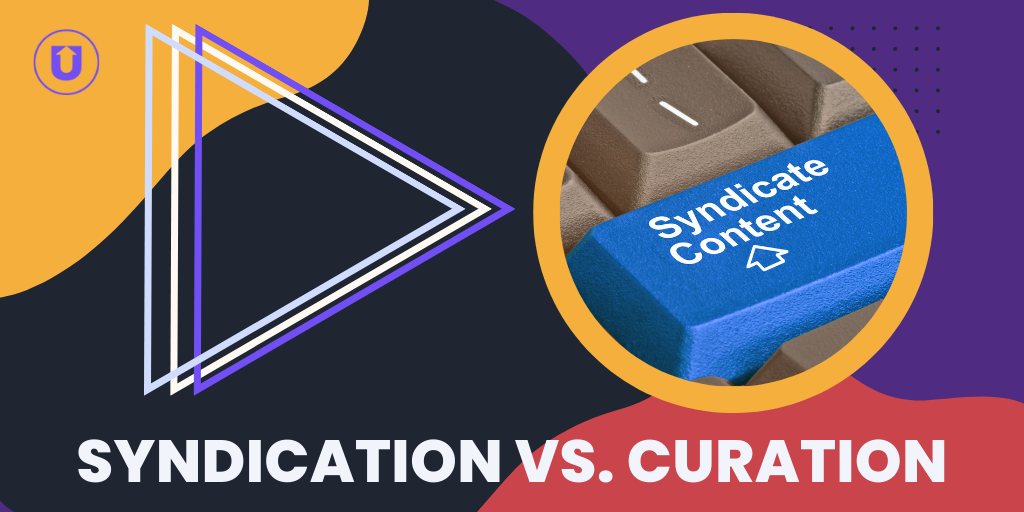Why Big Brands Are Shutting Down Their Content Suggestions Apps

It’s nearly impossible to talk about content marketing these days without mentioning content curation.
Curation has emerged as a key strategy in the space, especially because it is applicable to all major components of marketing: social media, email, blog posts, and more.
The increasing demand for relevant, engaging, and tailored content makes curation a necessity for successful brands, but the process can be both time-consuming and challenging.
As a result, over the past few years, a myriad of tools have emerged in an attempt to tackle the content curation beast, both independently as well as inside existing content marketing platforms.
Having this technology available made curation more accessible for marketers, who could ensure quality and resonance with less of a time investment.
However, just as soon as users settle in on a popular content discovery tool that fits seamlessly into their workflow, many of these technologies close their doors on that feature, sometimes with little advance warning.
If content curation is such an important part of a content marketing strategy and the demand is only increasing, why have brands like Swayy, Buffer, and Hootsuite shut down their content suggestion tools and features? What does this mean for content curation?
We thought it was worth taking a deeper dive into the “why” behind these decisions, as we believe it sheds light on the current state of content discovery and what both brands and consumers should consider moving forward.
Why Swayy, Buffer, and Hootsuite Killed their Content Suggestions

Swayy
By 2015, Swayy had emerged as one of the top content curation and social media analysis tools available, serving a community of 60,000 marketers.
Much of their success can certainly be attributed to their unique Natural Language Processing and Personalization technology, a mechanism that analyzed thousands of pieces of content each day, extracting topics and matching them based on a user’s social community.
As a result of their growing success, Swayy captured the attention of SimilarWeb, a company that produces competitive intelligence tools and reports, and quickly--without much pomp and circumstance--announced its sudden acquisition and decision to shut down the tool in July 2015. One of Swayy’s founders, Ohad Frankfurt, shared:
“At SimiliarWeb, we will keep focusing on what we love doing the most--analyzing data and building meaningful products people love and use globally.”
Outside of this reasoning, there is little public discussion as to why the founders no longer wanted to use their technology for content curation.
At any rate, the acquisition left thousands of marketers looking for a suitable replacement that delivered the same level of personalization that Swayy provided.
Buffer
In alignment with their goal to build the simplest and most powerful social media tool with consistent support and improvement, Buffer added a content suggestions feature in March 2014.
Initially, the feature provided a mix of daily recommendations, mostly featuring content about social media, marketing, productivity, and life hacks, that their team curated and consumed.
Though Suggestions was initially built to help users with onboarding, it didn’t take long for the team to see how helpful this feature was for all customers, not just those new to the tool.
Sharing of these suggested posts grew to up to 20,000 shares a day and Buffer began to include content from outside contributors. From there, they launched a mobile app, Daily, so users could add content suggestions to their Buffer queue with a fun Tinder-for-content concept, increasing content shares even more.
However, the feature was not free from its challenges. Users were asking for more personalization, as the same set of suggestions were being shared by Buffer’s entire customer base.
By December 2014, the Buffer team began working on the next phase of content suggestions, optimistic and excited about the potential ahead.
However, in July 2015, Buffer announced they were closing down the feature starting the following month.
While Suggestions made it easier for users to discover interesting content, the team also believed it was missing the mark in a few key areas they could not ignore: they only focused on a few specific topic areas, the design prioritized sharing content over consuming content, and the same pool of content for all users meant the same posts were being shared around the same time.
Additionally, Buffer did not feel they could overcome the challenges that come with personalization for such a diverse range of user interests and did not want to build a product that didn’t meet their own standards.
As a result, they closed down Suggestions with the aim of empowering their users to become their own content curators.
Hootsuite
By mid-2015, Hootsuite also hopped on the content curation train, releasing the Suggestions mobile app. In the release CEO Ryan Holmes explained the mission behind the app:
“The ability to share quality content with followers is critical to social success. Customers often tell us that they want to share more on social, but that it’s too time-consuming. Suggestions for mobile allows people to easily find and share content wherever they are and when it’s most convenient for them.”
Users could access recommended content based on their profile description and posting history in a news feed layout and share their favorites to their Hootsuite queue, significantly cutting down on the time spent sourcing relevant content.
Two years later in February 2017, Hootsuite made an announcement to the 33,000+ Suggestions app users that they were retiring the service. They explained:
“Suggestions has not been performing optimally in the recent months. An API that our product depended on was taken down last year, which has affected the quality of content being suggested. As such, we’ve decided to retire the service as it is not at the level of quality we typically like to deliver.”
At the end of their announcement, they suggested multiple alternatives that are also partners in their expansive Hootsuite ecosystem. They also have been diligent about supporting their community on social media in their quest to find a suitable replacement.
What This Means For Curation

If these three stories illustrate one thing, it’s that curation isn’t dead. In fact, it’s very much alive, but it’s a much bigger challenge than most brands are willing to take on for the long haul.
Even though these three brands clearly recognized the importance of curation and experienced success with their unique approaches, they each chose not to continue dedicating time and resources to finding and maintaining a sustainable solution to this ever-growing challenge.
One of the big takeaways we can learn from Buffer and Hootsuite’s experiences specifically is that curating personalized content requires far more resources than the average product feature. These powerhouse social media companies provide many other significant solutions, but curation is a beast of its own that requires its own dedicated team and development resources.
However, there are still many questions surrounding curation and it’s unclear if current technologies can really solve them:
Sharing vs. Consuming
Buffer wisely noted that their Suggestions application--along with many other curation platforms--emphasized the sharing of content, rather than the consumption of content. This raises the more ethical concerns of curators adding to the noise on social media to “keep up,” rather than intentionally sharing to spark conversation or build communities.
How can curation tools establish and promote the balance between consuming content and sharing with intention? Are these tools merely contributing to the volume of content or, by curating and sharing only a limited quantity of content, are they providing the solution?
Specific vs. Broad Searching
Thanks to Google, many of us have been conditioned to approach research in terms of broad keywords and phrases. As a result, many curation tools apply this practice to their search workflow. While this method is ideal for general discovery, it does not always yield the specificity of results that users may be looking for. This general approach can also lead to the curating and sharing of the same set of results that others in the industry have already shared, perpetuating the consumption of a narrow set of content.
By contrast, other tools may introduce a very specific approach to finding content, which can produce very specific and intended results, but not lend itself well to a more general “rabbit-hole” discovery of new and interesting content. Additionally, it can be difficult to teach this more specific method, as it often requires things like Boolean operators and layers of keywords, especially when users are looking for a faster and more streamlined way to find content.
How can curation tools balance the desire for both specific content and more general discovery?
Active vs. Passive Discovery
With so many automation tools available, it can be tempting to adopt a passive approach to curation, one in which an algorithm finds, curates, and even shares the content for you. However, this arguably contributes to the volume of content being shared, without the added context or voice provided by the curator. On the other hand, a completely active approach to curation is time-consuming. It’s most effective and efficient to find a happy medium in which the curator can play an active role in discovery and consumption and utilize automation tools to share and distribute content at strategically-timed intervals.
How can curation tools work in tandem with automation tools or introduce features that allow curators to be both intentional and efficient in their curating?
The Future of Content Curation

Though there are still many unanswered questions and challenges to tackle, curation is here to stay.
In fact, we predict that the value of curation by brands for its audiences will continue to increase as individuals feel saturated with content from all angles.
By providing a tailored solution, readers do not have to sort through thousands of pieces of content themselves, instead only relying on trusted sources to do the work for them.
Additionally, as the desire for varied and personalized content increases, so will the complexity of discovery. If technologies do not embrace this complexity, they will become obsolete.
What are your predictions for content curation? How will tools need to adapt and adjust to tackle the challenges of integrating human and algorithmic curation? We want to know!



